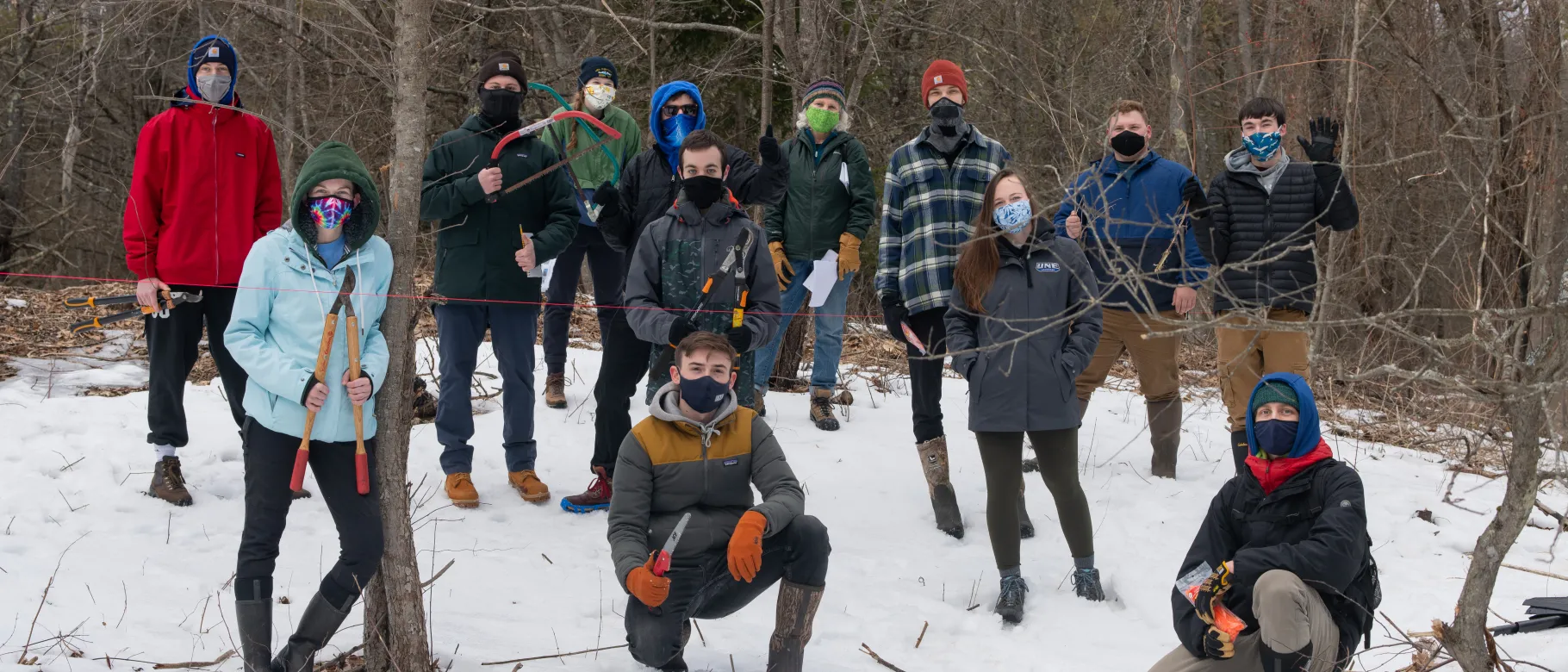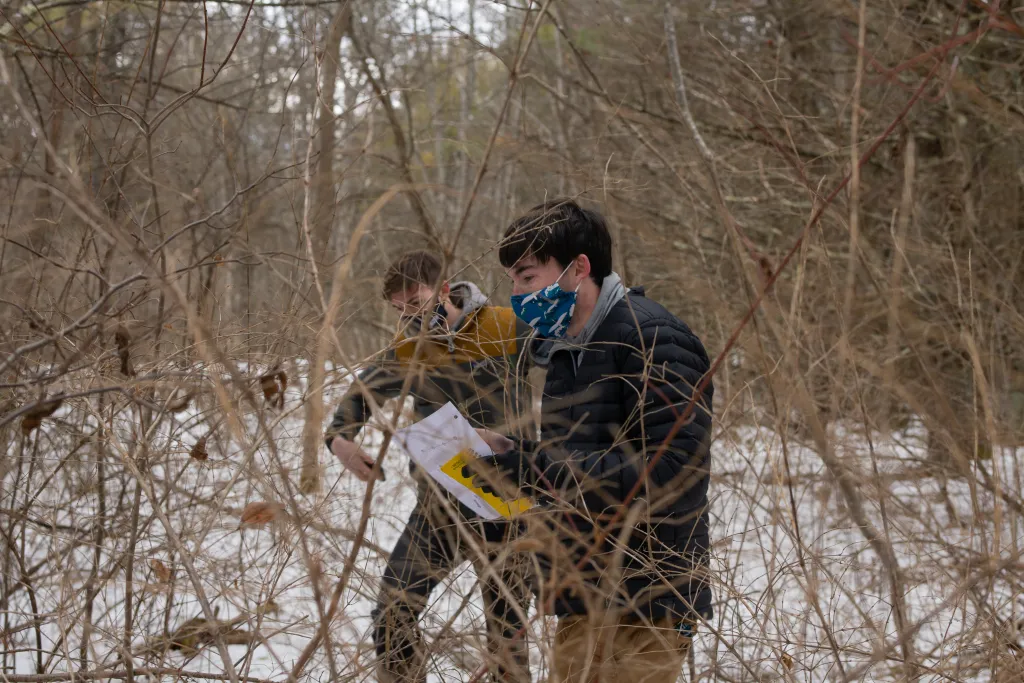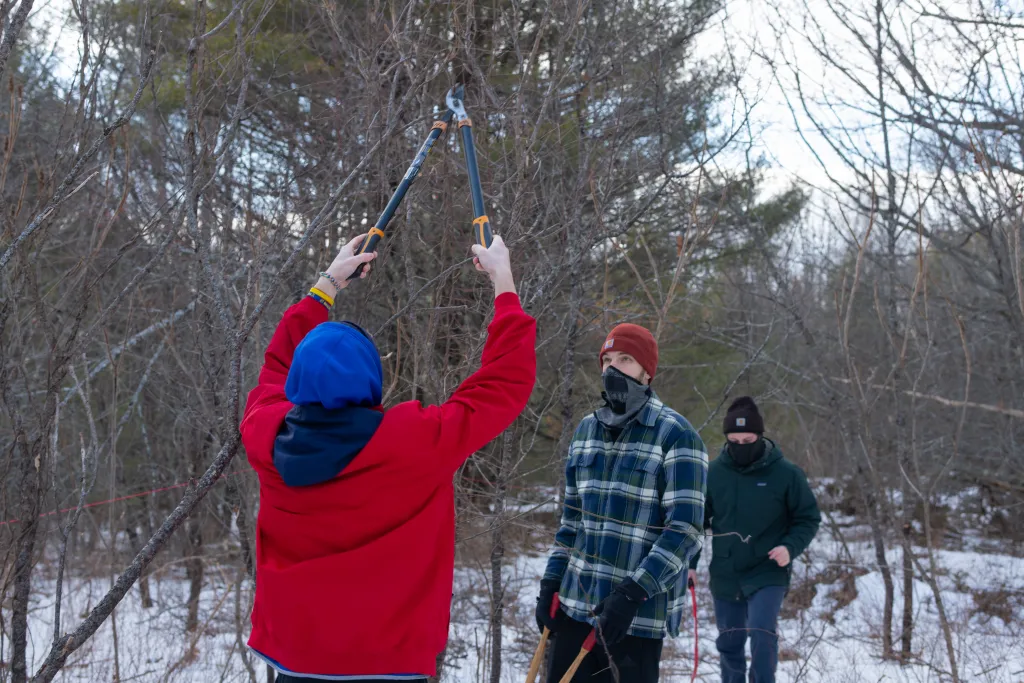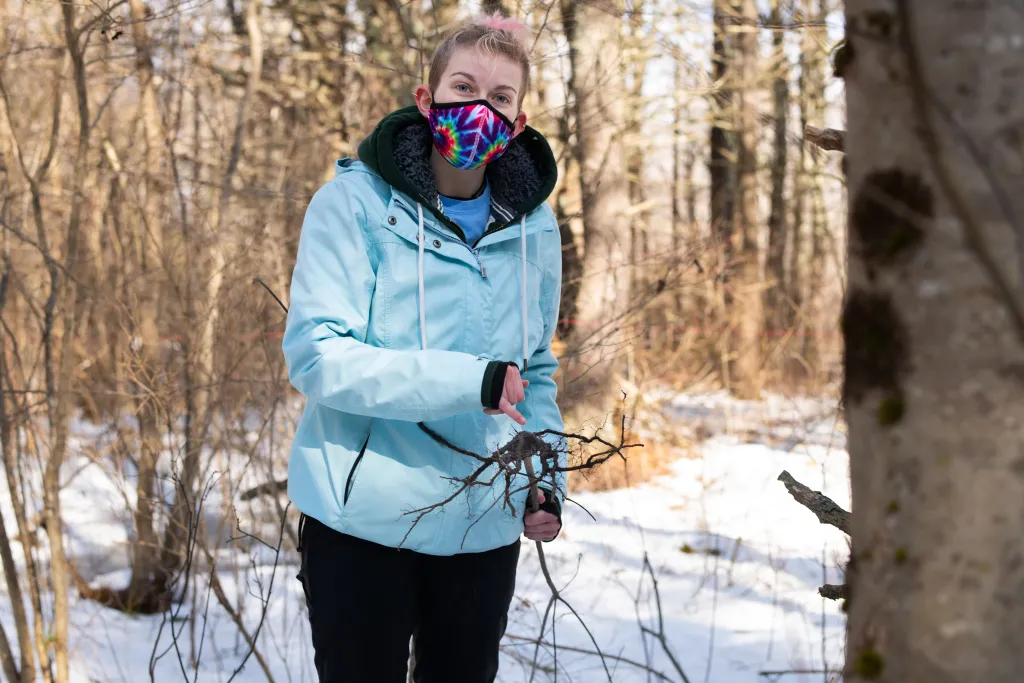In Kennebunkport, UNE students combat invasive plant species

Invasive plants are insidious little fiends.
They grow and spread very quickly, choking out native plant species and creating inhospitable living environments for existing wildlife. They are incredibly difficult to eradicate but can be controlled with proper monitoring — and one class of students at the University of New England is doing just that on conserved land in southern Maine.
In partnership with the Kennebunkport Conservation Trust (KCT), students in Professor Pamela Morgan’s Ecological Monitoring class recently spent a day outside identifying, studying, and removing invasive plant species in the woods of the sprawling Emmons Preserve, just a few short miles from the University’s Biddeford Campus.
Their work is focused on nine, 90-square-meter plots that were set up for research two years ago and are overrun by a number of invasive species. In the plots, students have identified the following: multiflora rose, glossy buckthorn, shrubby honeysuckle, Asiatic bittersweet, burning bush, and Japanese barberry.
While many are actually quite lovely to look at — and even more fun to pronounce — students said the plants produce fruits or berries that are not good for the mammals and birds that live in the preserve and depend on it to survive.
“These plants are basically just sucking up nutrients and resources while taking up space, so they aren’t really adding anything back to the environment,” remarked Sam Palmisano ’21, who studies environmental science and sustainability and business. “It’s very important that we take action now to try and preserve our local habitats.”
Tyler Riendeau (Environmental Science, ’21), added that the course’s experiential learning component will help him.
“I enjoy doing work like this because it not only helps our local community, but it also reinforces what we’ve learned in class,” said Riendeau, who aims to become an environmental consultant after graduation. “Most of the work I plan to do will be creating strategies and land management plans, so this is preparing me for that.”
The boots-on-the-ground approach is also beneficial for senior Connor Wiklund, who wants to integrate his studies in environmental science with geographic information systems (GIS) post-graduation from UNE.
“I love to be able to get my hands on what I’ve been studying and be actively involved in removing these invasive plants,” he said. “We’ve been analyzing the cover of invasive species on foot, and it’s the same concept when utilizing GIS but just from an aerial perspective.”
Jo Johnson (Biological Sciences, ’21), who uses they/them pronouns, said they welcomed the opportunity to benefit the Kennebunkport Conservation Trust — class credit or not.
“It feels incredible to be here,” said Johnson, of Colchester, Connecticut. “It’s one thing to study invasive plants and plant ecology, but it’s amazing to actually get out here and see them and then remove them.”
Johnson also said they are thankful that UNE can provide opportunities like this and hopes to encourage others to support the cause.
“I didn’t even know that I could come out here as a local member of the community and do this for the KCT until this class. I’ve been telling quite a few of my friends they can become involved on their own,” they remarked. “This is a really great opportunity that UNE has provided me.”


